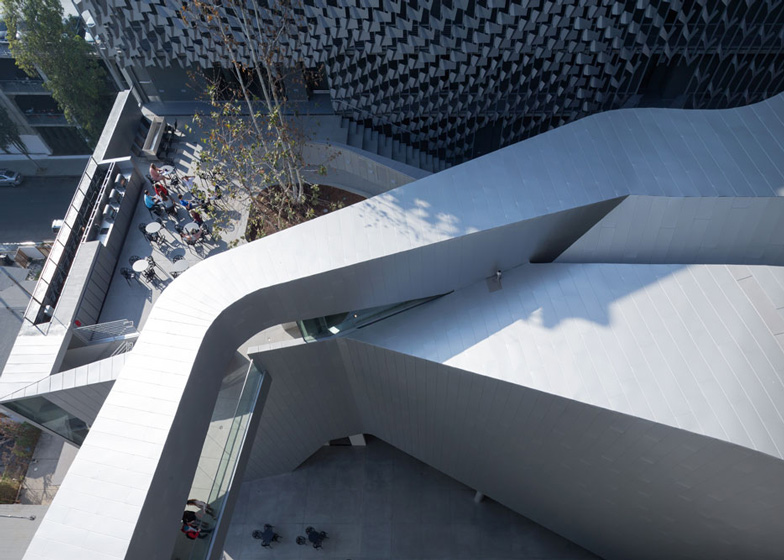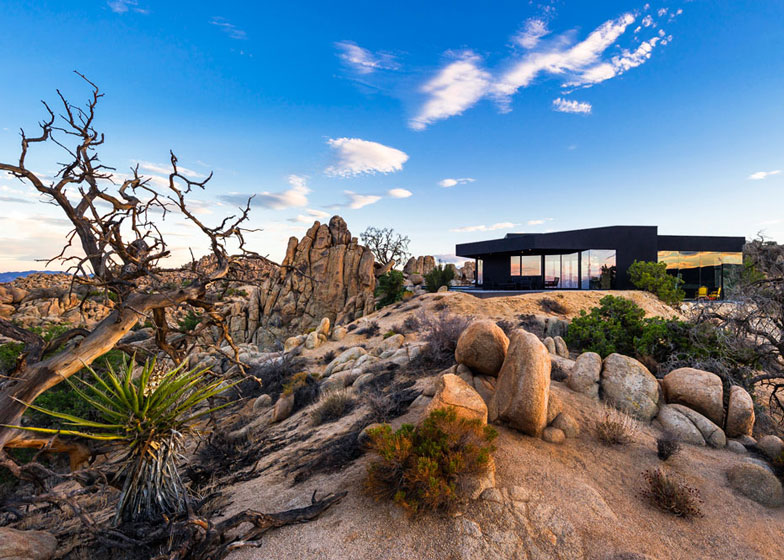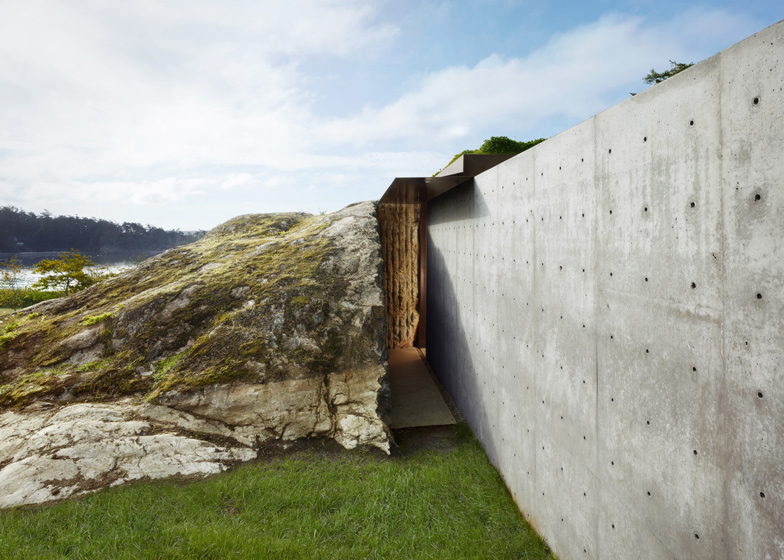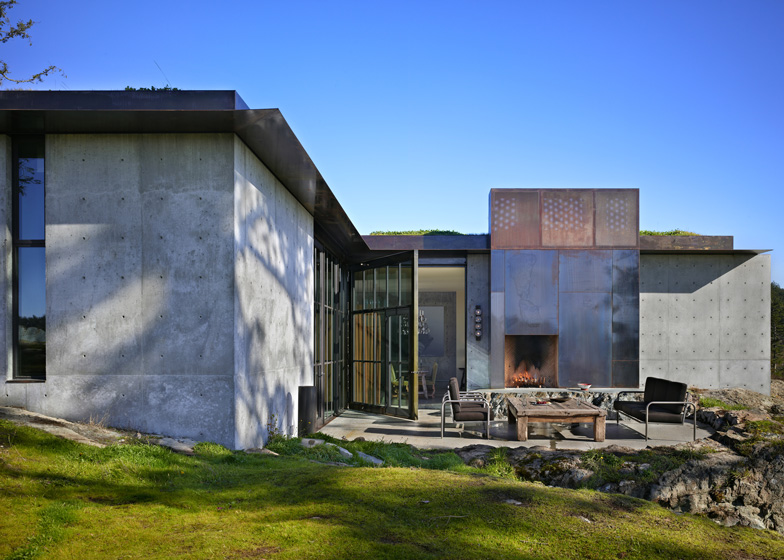We're celebrating America's Independence Day today with a roundup of Dezeen's favourite US projects from this year, including a floating skate ramp, a house designed to look like a shadow in the desert and a residence blasted out of the rocks near Seattle (+ slideshow).
Thom Mayne's Los Angeles firm Morphosis completed this Hollywood campus for arts school Emerson College in February. Two thin 10-storey buildings connected by a helipad create a frame for the teaching spaces which are housed in curvy modules connected by a series of terraces and bridges.
"I drive past this building everyday on my way to work," said one reader. "It's as stunning in person as it is in photographs. Makes me want to go back to school!"
Husband and wife architect duo Monica Oller and Tom Peiic were given an unusual brief from the client for this all-black building in the Yucca Valley desert: "to build a house like a shadow."
"This had a very specific relevance to the desert area where the sunlight is often so bright that the eye's only resting place is the shadows," they explained.
Bobbing on the waters of California's Lake Tahoe, this floating skateboard ramp was built in just four days by design-and-build team Jerry Blohm and Jeff King for Californian skater Bob Burnquist as part of a campaign by non-profit organisation Visit California.
"Dreaming big man, that's what I do every day, I just try to dream as big as I can and then go make it happen," said Burnquist in a video about the project.
Also from California is this brilliant white beach house punctured on all sides by arched windows and recesses.
Designed by Los Angeles studio Johnston Marklee, Vault House was originally conceived as a contemporary twist on the "shotgun houses" that were typical in southern USA until the 1920s.
Regular Dezeen favourite Olson Kundig Architects had to bring in dynamite to carve out the site for this raw concrete house that nestles among the boulders on one of the San Juan Islands, off the coast of the firm's home town Seattle.
"Putting the house in the rock follows a tradition of building on the least productive part of a site, leaving the best parts free for cultivation," said Tom Kundig, a director at Olson Kundig Architects.
Although completed in 2010, the project surfaced after being named as one of 26 winners of the American Institute of Architects' Institute Honor Awards this year.















